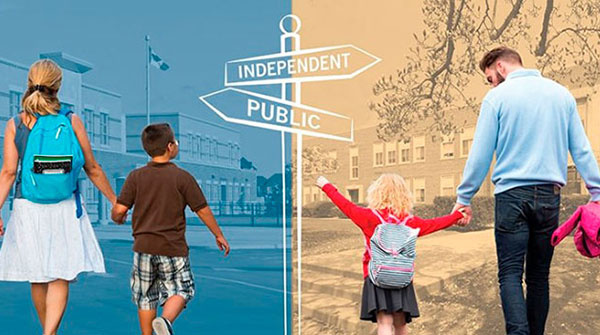 The Ontario government recently announced a new elementary school math curriculum. It’s likely a positive step but more fundamental funding changes are necessary to truly improve the province’s education system.
The Ontario government recently announced a new elementary school math curriculum. It’s likely a positive step but more fundamental funding changes are necessary to truly improve the province’s education system.
The province will return to a “back to basics” approach to math aimed at improving standardized test scores. It will also introduce lessons on financial literacy and coding.
Whether these changes will improve math education remains to be seen. What’s certain is that the new approach can’t be much worse than the path Ontario’s public schools have been going down for almost two decades.
From 2003 to 2018, math scores on tests administered by the Programme for International Student Assessment have steadily fallen in Ontario. The program evaluates the performance of 15-year-old students around the world. Science test scores have similarly deteriorated and there has been a modest drop in reading scores.
The decline in educational outcomes can’t be blamed on a lack of government spending on teachers. According to public school boards’ financial statements, as a result of significant increases before 2015, total teacher salary costs per student, excluding benefits and after adjusting for consumer price inflation, rose by 46 per cent from 2002-03 to 2017-18.
It’s no surprise that Ontario test scores have gone down while costs have gone up. Government policies help maintain a near monopoly for public schools and the teachers’ unions, so there’s not much pressure on them to improve.
Any family wanting to send their children to a private school must pay twice for education – first with their taxes and then through tuition. For many families, the cost is prohibitive, so they have no choice but to send their children to public school even if they find the quality of education unsatisfactory.
In other jurisdictions, however, school choice policies have greatly benefited families and improved educational outcomes. For example, last month Florida significantly expanded its school voucher program, which provides a subsidy of around $7,000 per student, to help low- and middle-income families send their children to a private school.
The result is that tens of thousands of families dissatisfied with the public school system have access to alternatives – a clear benefit to those families. Despite the gains it provides to low- and middle-income families, however, school choice is generally met with enormous opposition from progressive circles.
A common objection – raised most loudly by public sector unions, especially teachers’ unions – is that government funding to help families afford alternatives to the public school system will weaken public education by depriving the public system of funds. Yet the evidence from Florida shows just the opposite.
“A National Bureau of Economic Research study this year,” the Wall Street Journal recently reported, “found higher standardized test scores and lower absenteeism among students, especially low-income ones, who attended Florida public schools in areas where more students had access to private-school choice.”
So expanding access to private schools, instead of making the public schools worse, puts pressure on them to improve. Competition forced Florida public schools to deliver better education or else risk losing students, and therefore funding, to private schools.
Competition is always better than monopoly and the education system is no exception.
Ontario’s new math curriculum might be better than the old one. But if Ontario really wants a proven way to achieve widespread improvement in the quality of education, it should provide families with more school choice.
Matthew Lau is a research associate with the Frontier Centre for Public Policy.
Matthew is a Troy Media Thought Leader. Why aren’t you?
The views, opinions and positions expressed by columnists and contributors are the author’s alone. They do not inherently or expressly reflect the views, opinions and/or positions of our publication.

